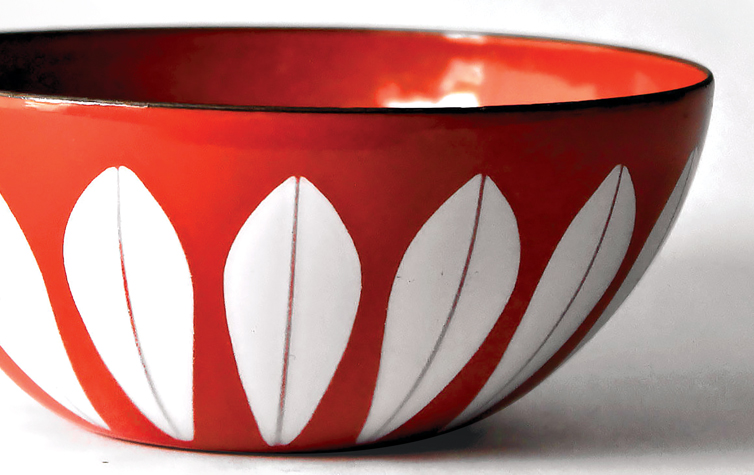We all love Danish furniture, but the collectible Scandi candy doesn’t end there. We detail 3 types of Scandinavian home goods that you can start adding to your collection today.
Quirky Quistgaard
Skinny or stout, wide or wonky, Jens Quistgaard pepper mills come in a variety of shapes. In fact, when a collection stands together, they may look more like an army of chess pieces than a useful kitchen implement.

After seeing Danish sculptor Jens Quistgaard’s Fjord cutlery on display at the Danish Museum of Art and Design, businessman Ted Nierenberg and his wife Martha sought him out—and so began the Dansk Company in 1954. As the chief designer of the American-based flatware and cookware company, Quistgaard’s modern take on household items spread across the United States, Europe and Japan. People appreciated Quistgaard’s work because kitchens were transitioning to more open layouts—which meant that utensils and cooking ware were more likely to be displayed as household treasures. Being a sculptor and an artisan, Quistgaard developed products that were both attractive and useful.
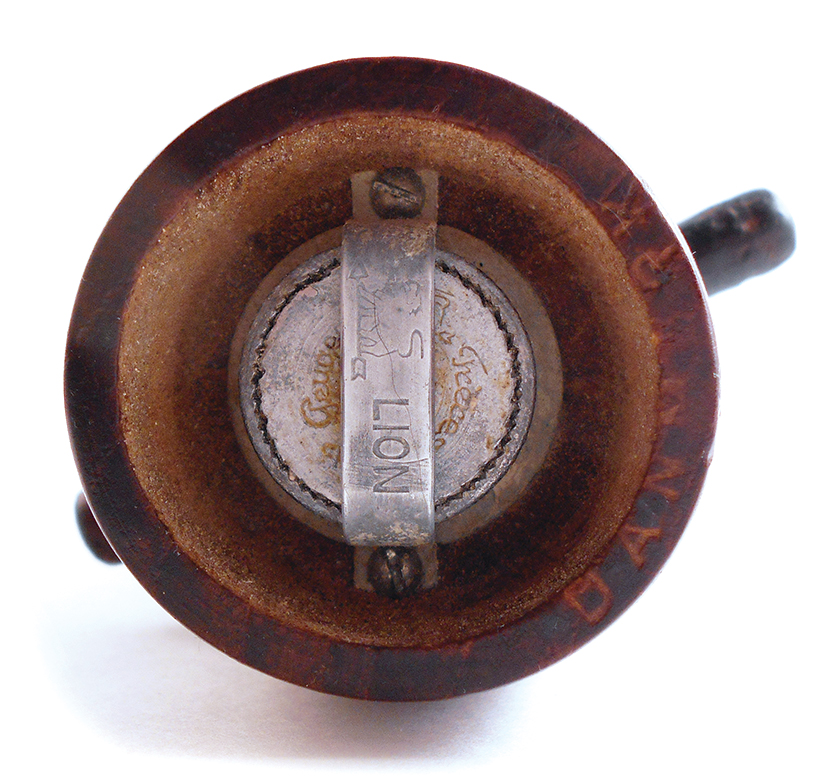
Quistgaard pepper mills were made from either bamboo or teak wood. Teak is a more expensive wood than most, but its durability and rot-resistant nature ensures longevity—a good sign for collectors. Today, Dansk has reissued the pepper mill with only a minor deviation from the original model. The new pepper mills are constructed from acacia, and can be purchased for $40 to $50 on Amazon.
You can also find vintage Quistgaard mills through antiquities auction sites as well as eBay and Etsy—with some starting as low as $15 and prices ranging into the thousands, depending on the condition and size of the collection. Pieces like the Quistgaard mill are durable, and are becoming more valuable as they become more rare. Because of their stunning designs, these teak pepper mills assimilate into the modern dining room and the vintage kitchen alike. Whether you collect them for a personal trove, or just keep one or two on hand for grinding, Quistgaard pepper mills are a go-to midcentury collectible.
Stylish Scandia
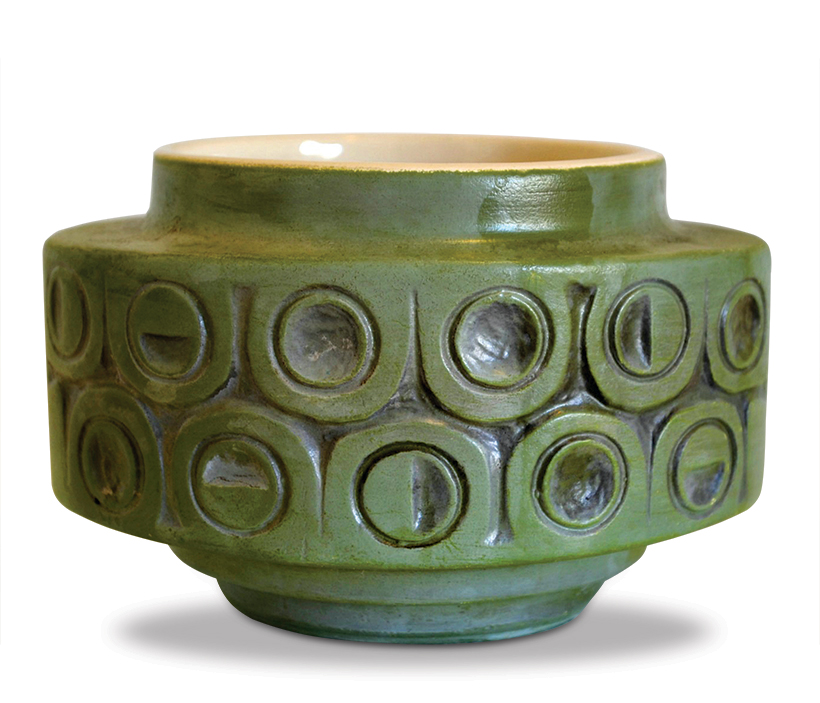
If you’re looking for the “real McCoy” of midcentury collectibles, look no further than McCoy Scandia vases, which amassed popularity in the 1970s. The Scandia vase is known for its perforated surface, dotted with small holes like inverted bubbles, or with pinwheel shapes.
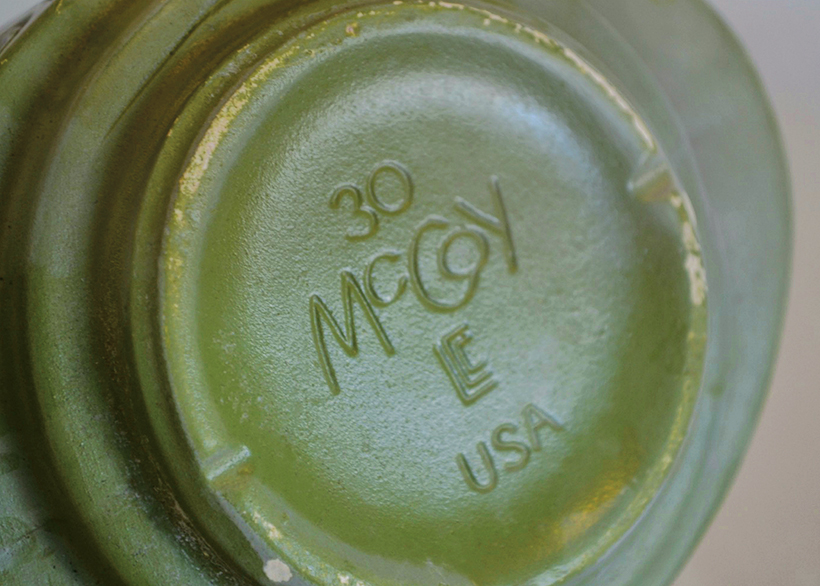
The vase’s creator, Nelson McCoy Sanitary and Stoneware Company, first got its start in 1910, as an offspring of the original McCoy Pottery Company from 1848. It was a father-son endeavor between J.W. and Nelson McCoy, and focused on mining and manufacturing stone. Unlike other products from the same company, Scandia vases took a modern turn, deviating from the traditional stoneware the company offered.
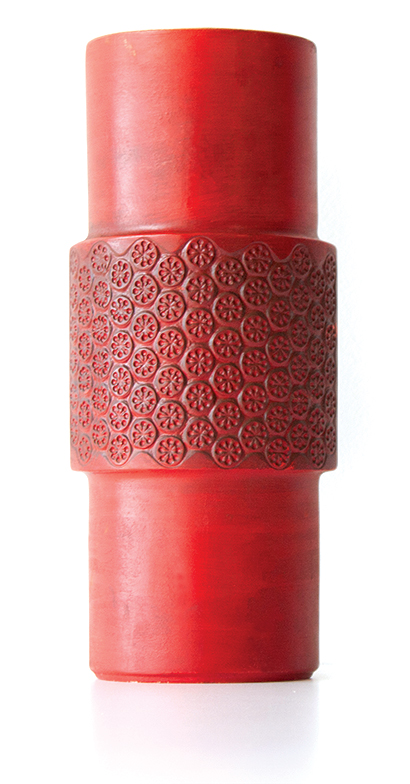
The vases took their name “Scandia” and inspiration from an artistic movement after Scandinavian style, borrowing Danish design elements. These vases were produced in five colors, including the delectable “avocado green” and “bisque” shades.
In addition to functioning as modern art, the Scandia line features functional, utilitarian designs. So, you can leave them empty as a colorful exhibit, or freshen up those vintage holders with flower arrangements or potted plants.
To verify that your McCoy is the real deal, look for the maker’s mark. For this line and era of the company’s history, the mark will likely be one of the company’s later stamps—a number, the company name, stacked LCC (for the Lancaster Colony Corporation, who purchased McCoy in 1974) and “USA.” McCoy signatures are not incredibly consistent, so a simple number and “USA” are also likely.
To further authenticate your piece, check out the dimensions of the vase in question and do your research to compare your measurements to the dimensions of previously verified McCoys. If the numbers check out, so should your vase.
Purchase your own Scandia vase through the auction site at mccoypottery.com, with prices starting at $90, or try looking on Etsy for an array of selections.
Catchy Cathrineholm
Female Norwegian designer, Grete Prytz Kittelsen developed international acclaim at the 1954 Triennale exhibition in Milan, and proceeded to style enamelware items for Cathrineholm in Norway. When her designs met Arne Clausen’ lotus leaf pattern in the early 1960’s, the now iconic midcentury kitchenware was born.
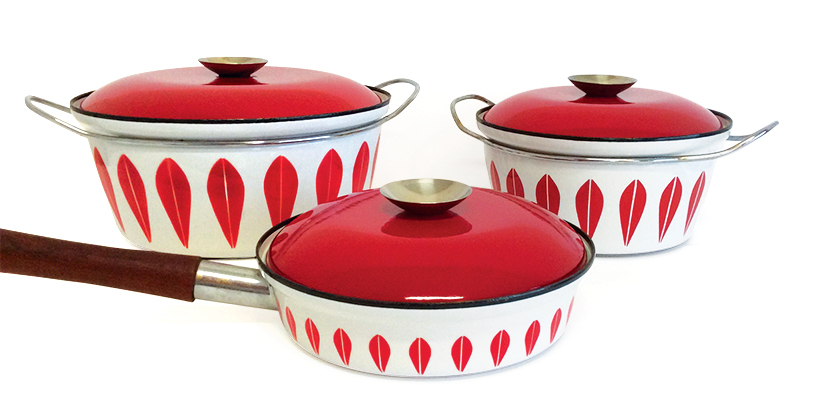
Though founded in 1829, the company did not enjoy extravagant success until the 1960s, thanks largely to Kittelsen’s contributions and the release of her designs with Clausen’s colorful lotus pattern. Kittelsen’s wares also featured a pleasant stripe pattern, but these did not garner nearly as much popularity. Initially manufactured as brightly colored kitchenware, Kittelsen’s line gradually expanded to include more muted tones as the 1970s approached. Unfortunately, Cathrineholm closed in 1971, and half a century later, the products are collectibles.
“Enamelware” is a general term used to describe any kitchen item that has been glossed with enamel. Because Cathrineholm was a steel company, Cathrineholm products tend to be enamel-covered steel. Unglazed kitchen items are much more susceptible to breaking, but enamel keeps the dish intact. It may chip over time, but it’s much heartier than ordinary kitchenware. This heartiness makes it relatively easy to find Cathrineholm pieces in good condition.
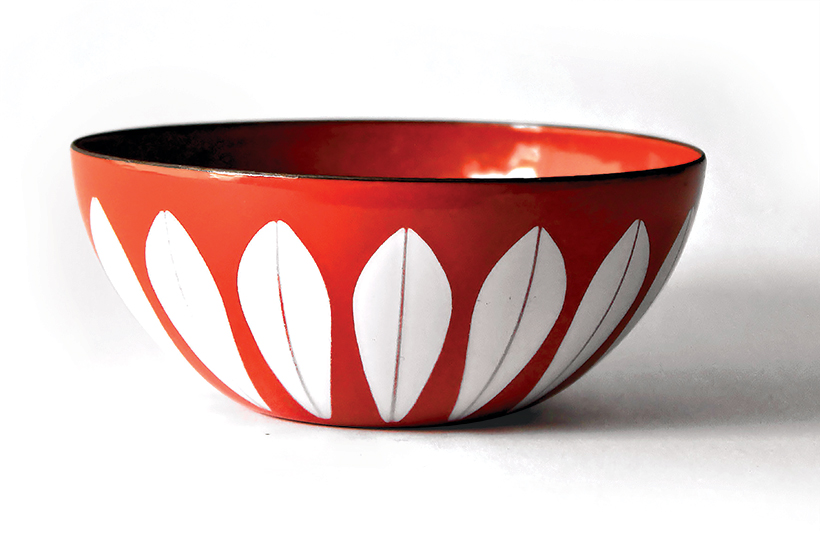
Aside from your local vintage shops, Cathrineholm kitchenware donning the colorful lotus leaf design can be purchased on eBay, Etsy, or 1stdibs.com, with an incredibly wide price range. If you are purchasing an entire set or if your cabinet space doesn’t allow for collecting bowls, casserole dishes, pots and pans, a piece of artwork might be just the trick. Clausen’s lotus design is so iconic that the kitchenware has become the subject of artwork and can be found in modern prints.

